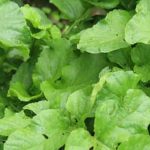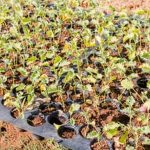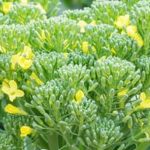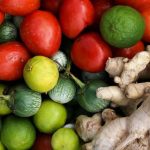Container vegetable gardening in the Pacific Northwest offers a multitude of benefits for both experienced and novice gardeners alike. This method of gardening allows individuals to grow their own fresh, organic produce even in limited spaces such as balconies, patios, or small yards. The Pacific Northwest region is known for its unique climate and challenges, making container gardening an ideal solution for those looking to cultivate their own vegetables in this area.
The Pacific Northwest presents gardeners with distinct challenges including cool and damp weather, limited sunlight, and heavy rainfall. However, container vegetable gardening provides a way to overcome these obstacles and create thriving gardens despite the conditions. By utilizing containers, gardeners have greater control over the soil quality and moisture levels while also being able to move their plants to optimal locations for sun exposure.
When it comes to choosing the right containers for gardening in the Pacific Northwest, there are several options available. From traditional terracotta pots to modern fabric containers or even repurposed items such as buckets or crates, the choice depends on personal taste and budget. Additionally, selecting cold-tolerant vegetables is key when considering what to grow in this region. With careful planning and preparation, container vegetable gardening can yield a bountiful harvest of delicious and nutritious produce throughout the year.
The Unique Challenges of Gardening in the Pacific Northwest
The Pacific Northwest is known for its lush landscape and abundant rainfall, making it an ideal region for gardening. However, there are also unique challenges that gardeners in this region face. This section will explore these challenges and provide tips on how to overcome them.
One of the main challenges of gardening in the Pacific Northwest is the wet climate. With an average annual rainfall of over 40 inches, excessive moisture can pose a threat to plants. It can lead to waterlogged soil, which can result in root rot and other fungal diseases.
To combat this, it is important to ensure proper drainage when choosing containers for your vegetable garden. Opt for containers with drainage holes at the bottom or add a layer of gravel or perlite to improve drainage.
Another challenge in the Pacific Northwest is the cool and unpredictable weather. Summers can be mild and winters can be long and cold, which limits the growing season for many vegetables. However, there are plenty of cold-tolerant vegetable varieties that thrive in this region. Some popular options include kale, Brussels sprouts, Swiss chard, and radishes. These vegetables can withstand cooler temperatures and continue to grow even as autumn approaches.
Additionally, the Pacific Northwest is also prone to pests such as slugs and snails due to its damp climate. These pests can damage young seedlings and munch on leaves of mature plants. To protect your container vegetable garden from pests, consider using natural remedies like diatomaceous earth or copper tape around containers to deter slugs and snails.
Overall, while gardening in the Pacific Northwest may present some challenges, with proper planning and care, it is possible to have a successful container vegetable garden in this region.
| Challenge | Solution |
|---|---|
| Excessive moisture leading to waterlogged soil | Ensure proper drainage when choosing containers, add a layer of gravel or perlite to improve drainage. |
| Cool and unpredictable weather | Choose cold-tolerant vegetable varieties like kale, Brussels sprouts, Swiss chard, and radishes. |
| Pests such as slugs and snails | Use natural remedies like diatomaceous earth or copper tape to deter pests. |
Choosing the Right Container
Considerations for Choosing the Right Container
When it comes to container vegetable gardening in the Pacific Northwest, choosing the right container is crucial for successful growth and development of your plants. The container you select should not only provide adequate space for your vegetables but also be suitable for the region’s unique climatic conditions. Here are some key considerations to keep in mind when choosing containers for your vegetable garden:
Size and Depth
The size and depth of the container are important factors to consider as they determine how well your vegetables will grow. Ensure that your chosen containers are large enough to accommodate the root systems of your plants, allowing them enough room for proper growth and development. As a general rule, opt for containers with a depth of at least 12 inches to ensure optimal root expansion.
Drainage
Proper drainage is essential to prevent waterlogging and root rot in container vegetable gardens. Look for containers that have drainage holes at the bottom to allow excess water to escape. Additionally, consider placing a layer of gravel or small stones at the bottom of the container before adding soil. This will further enhance drainage efficiency.
Material
Choosing the right material for your containers can have an impact on both aesthetics and functionality. Common options include plastic, ceramic, metal, wood, or fabric. Each material has its pros and cons such as durability, insulation properties, weight, and moisture retention capabilities. Consider your personal preferences as well as the specific needs of your plants when deciding which material is best suited to your gardening goals.
Best Container Options for Pacific Northwest Gardening
In addition to considering these general factors when selecting containers, there are specific options that work particularly well in the Pacific Northwest climate:
- Terracotta pots: These clay pots offer excellent breathability due to their porous nature, allowing for better air circulation around the roots. Their natural aesthetic also adds a touch of warmth and charm to any garden.
- Fabric grow bags: These lightweight containers are becoming increasingly popular among container gardeners in the Pacific Northwest. They provide excellent drainage while also allowing for air pruning, which encourages healthier root development and prevents root circling.
- Self-watering containers: Designed with a built-in water reservoir, self-watering containers are perfect for the erratic weather patterns often experienced in the Pacific Northwest. These containers ensure that your plants receive consistent moisture without the risk of overwatering or underwatering.
- Raised beds: While not traditionally considered containers, raised beds offer similar benefits and can be particularly advantageous in the Pacific Northwest due to their ability to improve soil drainage and prevent waterlogging.
By considering these factors and options when choosing your containers, you will be well on your way to creating an ideal environment for your vegetables to thrive in the Pacific Northwest climate. Remember to select containers that suit your specific gardening needs, as well as complementing your personal taste and style preferences.
Selecting the Ideal Vegetables for Container Gardening in the Pacific Northwest
One of the key considerations when choosing vegetables for container gardening in the Pacific Northwest is their ability to withstand cold temperatures. The region’s cool and wet climate requires plants that can thrive in these conditions. Luckily, there are several cold-tolerant vegetable varieties that are well-suited for container gardening.
Here are some popular options to consider:
1. Kale: Kale is a nutrient-packed leafy green that thrives in cooler temperatures. It is highly adaptable and can be grown year-round in the Pacific Northwest. Choose compact varieties like ‘Red Russian’ or ‘Dwarf Blue Curled’ to maximize space in your containers.
2. Swiss Chard: Another cold-hardy leafy green, Swiss chard offers a wide range of beautiful colors and textures. Varieties such as ‘Bright Lights’ or ‘Rainbow’ will not only add visual appeal to your container garden but also provide a bountiful harvest throughout the growing season.
3. Radishes: Radishes are quick-growing root vegetables that can be harvested within a month of planting. They prefer cooler weather and make an excellent choice for container gardening in the Pacific Northwest. Consider varieties like ‘Cherry Belle’ or ‘French Breakfast’ for their crisp texture and delicious flavor.
4. Carrots: While carrots need deep soil to grow properly, they can still be successfully grown in containers with certain adaptations. Look for smaller or cylindrical varieties such as ‘Little Finger’ or ‘Paris Market’, which are better suited for container gardening.
It’s important to note that while these vegetables are cold-tolerant, they still require proper care and attention to thrive in containers. Adequate watering, fertilizing, and protection from pests will contribute to their overall success.
By selecting cold-tolerant vegetable varieties, you can enjoy a bountiful harvest all year round in your container garden in the Pacific Northwest. Experiment with different vegetables and enjoy the benefits of fresh and homegrown produce, even in colder climates.
The Essential Steps to Prepare Containers and Soil for Successful Gardening in the Pacific Northwest
Preparing containers and soil is a crucial step in container vegetable gardening in the Pacific Northwest. The right preparation ensures that plants have the necessary nutrients, drainage, and support to thrive. Here are the essential steps to prepare containers and soil for successful gardening in this region:
- Choosing the Right Containers: Selecting the right containers is important for successful gardening in the Pacific Northwest. Opt for containers made of durable materials like ceramic, plastic, or wood. It’s recommended to choose containers with drainage holes at the bottom to prevent waterlogging.
- Cleaning and Sterilizing Containers: Before planting, it’s important to clean and sterilize containers to remove any harmful bacteria or pests that may affect plant growth. Wash containers thoroughly with soap and water, then sanitize them by soaking them in a solution of one part bleach to nine parts water for 10 minutes.
- Selecting High-Quality Soil: The choice of soil is crucial for container vegetable gardening success. Use high-quality potting soil or a well-draining mix specifically formulated for container gardens. Avoid using garden soil as it tends to be heavy and poorly draining, which can lead to root rot.
4.
| Step | Description |
|---|---|
| Choosing the Right Containers | Select durable materials like ceramic, plastic, or wood with drainage holes. |
| Cleaning and Sterilizing Containers | Wash containers thoroughly with soap and water, then sanitize with a bleach solution. |
| Selecting High-Quality Soil | Use high-quality potting soil or well-draining mix specifically formulated for container gardens. |
Key Tips for Watering and Maintaining Container Vegetable Gardens in the Pacific Northwest
Container vegetable gardening in the Pacific Northwest requires careful attention to watering and maintenance in order to ensure a successful harvest. The region’s unique climate and frequent rainfall can present challenges for container gardens, but with the right strategies, you can keep your plants healthy and thriving.
One key tip for watering container vegetable gardens in the Pacific Northwest is to monitor the moisture levels closely. While the region does receive ample rainfall, it’s important to remember that containers can dry out more quickly than garden beds due to their limited soil volume. It’s recommended to check the moisture level of your containers regularly by sticking your finger into the soil up to your first knuckle.
If it feels dry at this depth, it’s time to water. Additionally, using a moisture meter can provide a more accurate reading of the soil’s moisture content.
When watering container gardens in the Pacific Northwest, it’s crucial to strike a balance between providing enough water for plant growth and preventing over-watering. Over-watering can lead to root rot and other fungal diseases.
To avoid this, use a watering technique that allows excess water to drain freely from the containers. This can be achieved by ensuring that each container has sufficient drainage holes at the bottom and placing them on risers or saucers filled with gravel or pebbles to allow excess water to drain away.
Maintaining container vegetable gardens also involves regular fertilization throughout the growing season. Due to the limited amount of soil in containers, nutrients can be quickly depleted, affecting plant health and productivity. Using organic fertilizers high in nitrogen, phosphorus, and potassium will help replenish these essential nutrients. Consider incorporating slow-release fertilizer pellets or liquid fertilizer every two weeks during active growth periods.
In addition to proper watering and fertilizing, maintaining container vegetable gardens in the Pacific Northwest also requires routine tasks such as pruning dead leaves or stems, removing weeds, checking for pests or diseases, and protecting plants from extreme weather conditions like strong winds or hailstorms. Regular monitoring and prompt action will help ensure the health and productivity of your container vegetable garden throughout the growing season.
By following these key tips for watering and maintaining your container vegetable garden, you can overcome the challenges presented by the Pacific Northwest climate and have a successful harvest. With proper care and attention, container gardening can be a rewarding experience in this region, allowing you to enjoy homegrown vegetables even in limited spaces.
Dealing with Pests and Disease
Pests and diseases can pose significant challenges to container vegetable gardens in the Pacific Northwest. However, with proper knowledge and effective methods, it is possible to protect your garden and ensure a bountiful harvest. This section will provide valuable tips and strategies for dealing with pests and disease in your container vegetable garden.
Identifying Common Pests
One of the first steps in managing pests in your container vegetable garden is being able to identify them. Some common pests that can affect plants in the Pacific Northwest include aphids, slugs, snails, caterpillars, and spider mites. Learn how to recognize the signs of infestation caused by these pests so that you can take action early.
Organic Pest Control Methods
In an effort to maintain organic practices, many gardeners prefer to use natural pest control methods. There are several effective options available, such as companion planting, which involves growing certain plants together to deter pests. For example, planting marigolds near your vegetables can help repel aphids and nematodes. Additionally, using insecticidal soaps or sprays made from ingredients like neem oil can effectively control certain pests without harming beneficial insects.
Disease Prevention Techniques
Preventing diseases is crucial for maintaining a healthy container vegetable garden. One key method is practicing good sanitation by regularly cleaning tools and containers to prevent the spread of pathogens. It is also important to choose disease-resistant varieties when selecting vegetables for your garden. Proper spacing between plants will allow for good air circulation and reduce the risk of disease spread.
Integrated Pest Management (IPM)
Integrated Pest Management (IPM) is an approach that combines multiple strategies to manage pests effectively while minimizing environmental impact. It involves monitoring plants regularly for pest activity, using cultural practices like crop rotation or trap cropping, and as a last resort, the targeted use of pesticides. By implementing IPM techniques, you can create a balanced ecosystem in your container vegetable garden and keep pest populations under control.
Seek Local Expertise
Every region has its own specific pests and diseases that pose challenges to gardening. It is helpful to seek advice from local garden centers, extension services, or fellow gardeners who have experience in the Pacific Northwest. They can provide valuable insights into the most prevalent pests and diseases in your area, along with effective methods for managing them.
By following these effective methods for dealing with pests and diseases in your container vegetable garden, you will be able to protect your plants and ensure healthy growth. With careful planning and proactive measures, you can overcome the challenges posed by pests and diseases in the Pacific Northwest and enjoy a successful harvest from your container vegetable garden.
Seasonal Considerations and Planning
In the Pacific Northwest, where the climate can be characterized by cool, wet winters and relatively mild summers, proper seasonal considerations and planning are essential for maximizing yield in container vegetable gardening. By understanding the unique seasonal variations and planning accordingly, gardeners can optimize their growing seasons and achieve bountiful harvests throughout the year.
One of the key considerations for seasonal planning is determining the appropriate planting times for different vegetables. In the Pacific Northwest, some cold-tolerant crops can be planted as early as late winter or early spring, while others may need to wait until the soil has warmed up a bit more. It is important to consult planting guides or local extension offices to determine the recommended planting dates for specific vegetables in your area.
Another aspect of seasonal planning is succession planting. As container gardens have limited space, it’s crucial to have a plan for replanting containers after harvesting one crop. Succession planting involves planting new seeds or seedlings as soon as you harvest a crop, ensuring a continuous supply of fresh vegetables throughout the growing season. This practice also helps maximize yields by making full use of available space and extending productive times in each container.
Additionally, understanding the weather patterns of each season is vital for successful container vegetable gardening in the Pacific Northwest. Paying attention to temperature fluctuations, rainfall levels, and potential frost dates will enable gardeners to adjust watering schedules and protect plants from adverse weather conditions. Floating row covers or cloches can be used during colder seasons to provide extra protection from frost.
By considering factors such as optimal planting times, succession planting, and adapting gardening practices based on weather patterns, gardeners in the Pacific Northwest can design a well-planned seasonal calendar that maximizes yield and ensures a flourishing container vegetable garden all year round. With proper planning and careful consideration of each season’s unique challenges and requirements, gardeners can enjoy a productive and rewarding experience with container vegetable gardening in this beautiful region.
Success Stories and Testimonials
Many individuals in the Pacific Northwest have successfully embraced container vegetable gardening as a way to grow their own fresh produce, even in limited spaces or challenging outdoor conditions. These success stories serve as inspiration for others who are interested in starting their own container gardens.
One such success story comes from Sarah Johnson, a resident of Portland, Oregon. With her small apartment balcony, she thought she would never have the opportunity to grow her own vegetables. However, after some research on container gardening techniques suitable for the Pacific Northwest climate, she decided to give it a try.
Sarah opted for a selection of compact tomato plants, peppers, and herbs that could thrive in containers. With careful watering and regular fertilizing, Sarah was amazed at how successful her container vegetable garden became. She now enjoys daily harvests of fresh produce right on her balcony.
Another inspiring success story comes from Seattle resident Mark Thompson. Living in an urban environment with limited outdoor space didn’t stop Mark from pursuing his passion for gardening. Using a variety of creative containers such as hanging baskets and repurposed crates, he was able to cultivate an impressive assortment of leafy greens like lettuce and spinach.
Despite the Pacific Northwest’s cool and wet climate, Mark implemented proper drainage techniques by drilling holes in his containers to prevent waterlogged soil issues. As a result, Mark has been thriving with an abundant supply of delicious homegrown salads.
These success stories highlight how container vegetable gardening can be tailored to fit any individual’s needs and circumstances while still yielding excellent results in the Pacific Northwest region. By choosing the right plants for containers and implementing proper care techniques specific to this environment, anyone can create their own thriving edible oasis even without a traditional garden plot.
Whether it’s a balcony garden or a rooftop terrace, these real-life examples demonstrate that container vegetable gardening offers practical solutions for individuals living in urban areas or those with limited gardening space. Through trial and error, these gardeners have discovered the immense joy and satisfaction that comes from growing their own food while experiencing the unbeatable taste of freshly harvested vegetables.
Conclusion
Container vegetable gardening in the Pacific Northwest may pose unique challenges, but with the right knowledge and preparation, it can be a rewarding and enjoyable experience. By choosing the right containers and vegetables, preparing the soil properly, maintaining adequate watering practices, protecting against pests and diseases, and considering seasonal variations, gardeners in this region can maximize their yield and achieve successful results.
One of the key takeaways from this article is the importance of selecting cold-tolerant varieties for container gardening in the Pacific Northwest. This allows gardeners to extend their growing season and enjoy fresh vegetables even during colder months. Additionally, success stories and testimonials highlight that with proper care and attention, container vegetable gardens in this region can flourish.
Another crucial aspect to consider when embarking on container vegetable gardening in the Pacific Northwest is understanding the unique challenges that come with this climate. Factors such as frequent rain showers require special attention to ensure proper drainage and prevent waterlogged soil. Protecting against pests and diseases also becomes essential for maintaining healthy plants.
In conclusion, container vegetable gardening in the Pacific Northwest offers many benefits despite its challenges. With careful planning, knowledge of specific tools and techniques suited for this region’s climate, appreciation for cold-tolerant varieties, and dedication to regular maintenance practices, gardeners can experience joy and reap rewarding harvests from their container gardens.
So whether you are a beginner gardener or an experienced one looking to try something new, embracing container vegetable gardening in the Pacific Northwest is a decision that can bring immense satisfaction and delicious homegrown produce.

If you’re looking to get into vegetable gardening, or are just looking for some tips on how to make your current garden better, then you’ve come to the right place! My name is Ethel and I have been gardening for years. In this blog, I’m going to share with you some of my best tips on how to create a successful vegetable garden.





